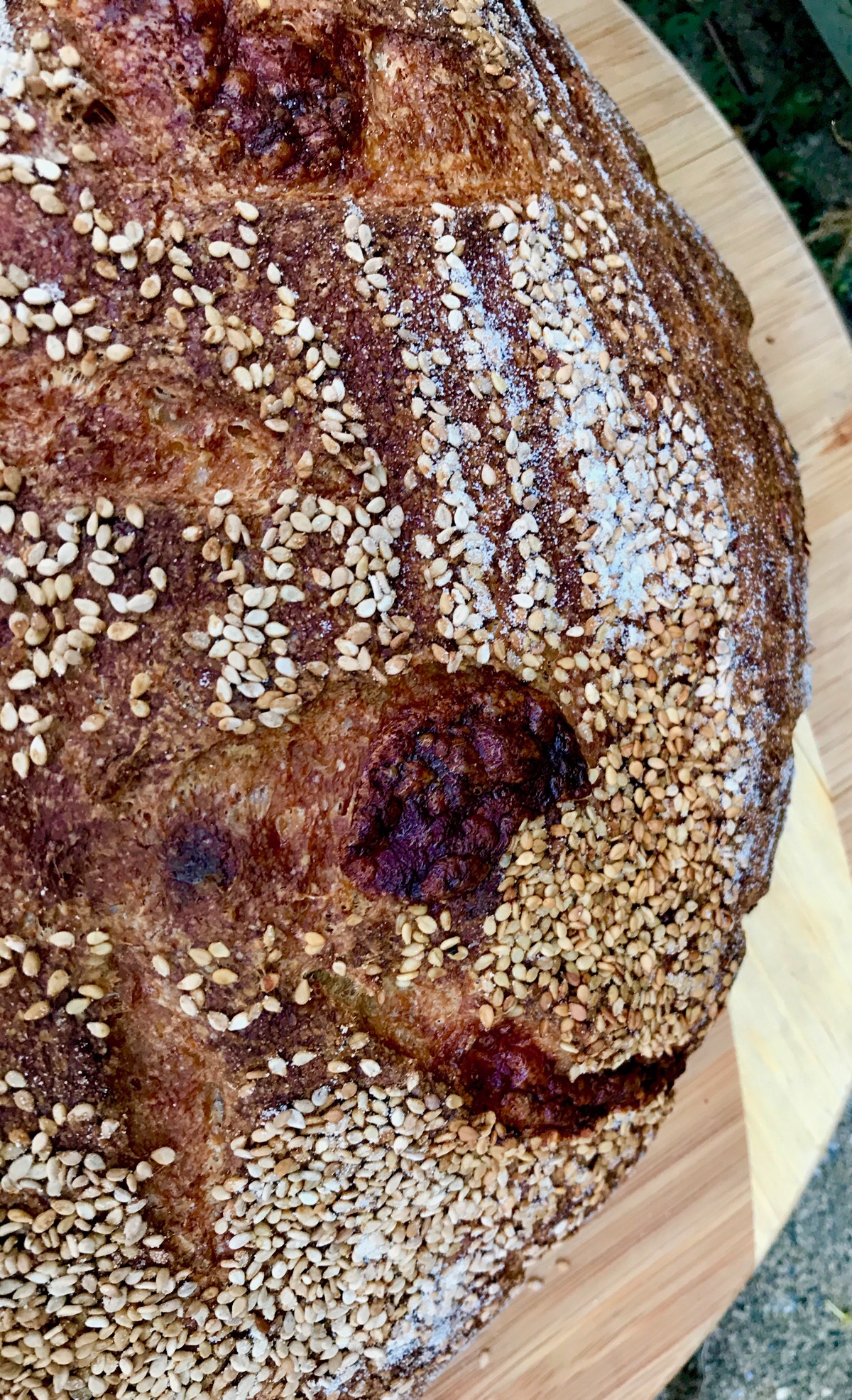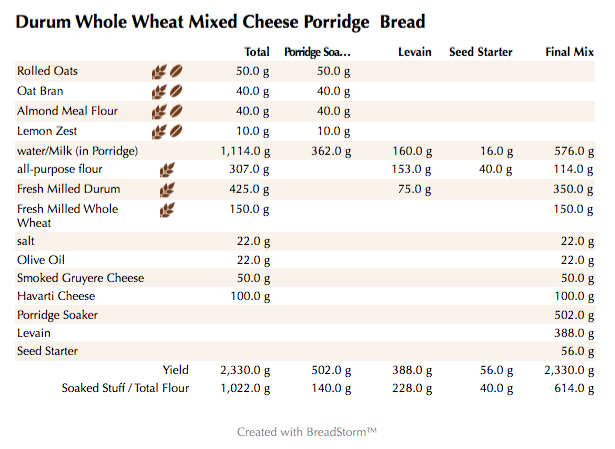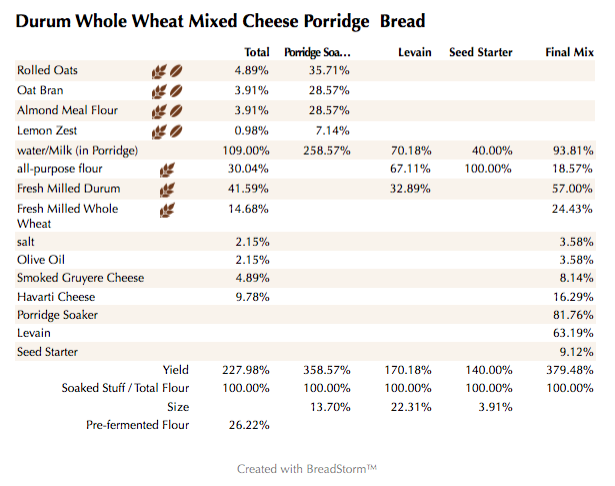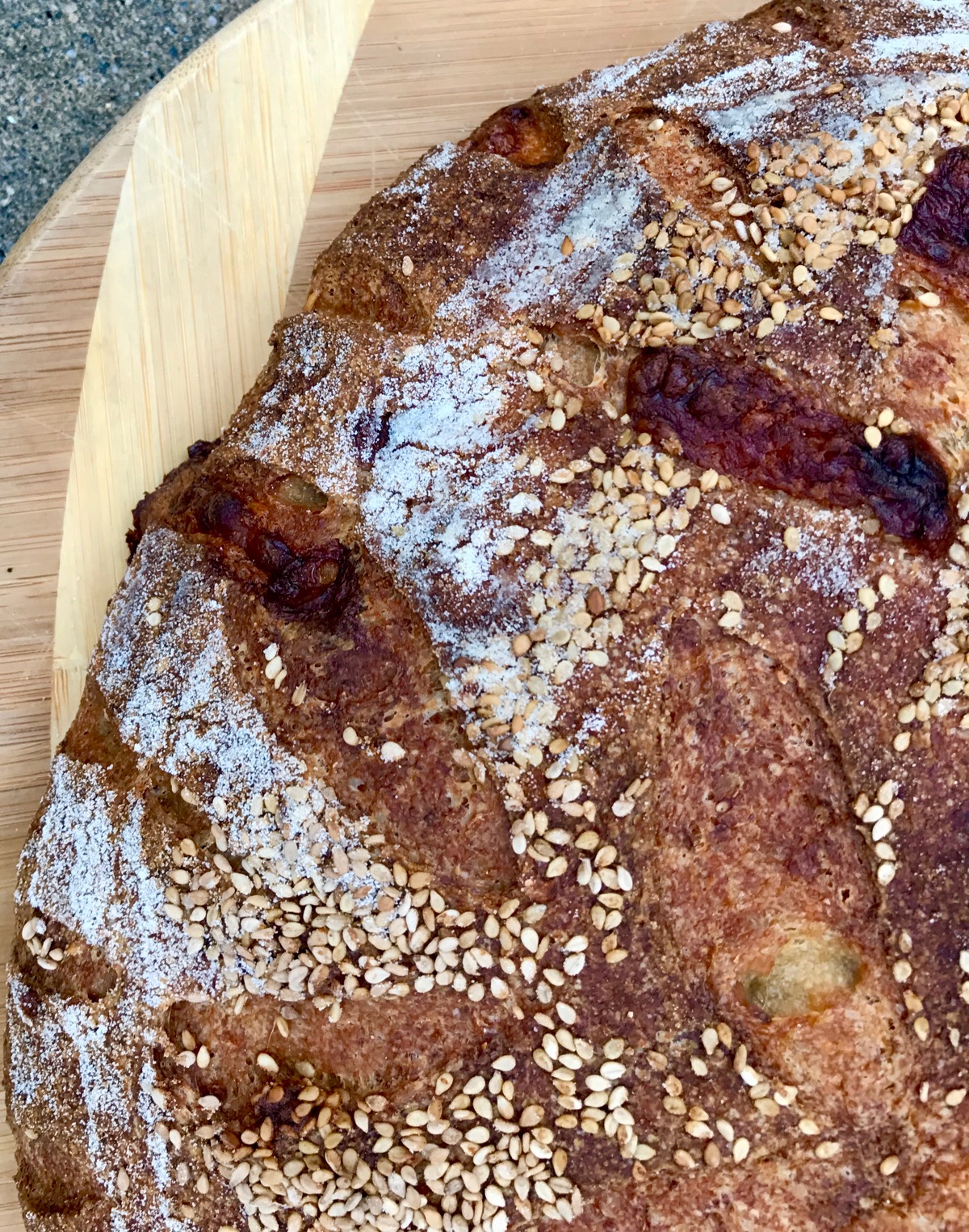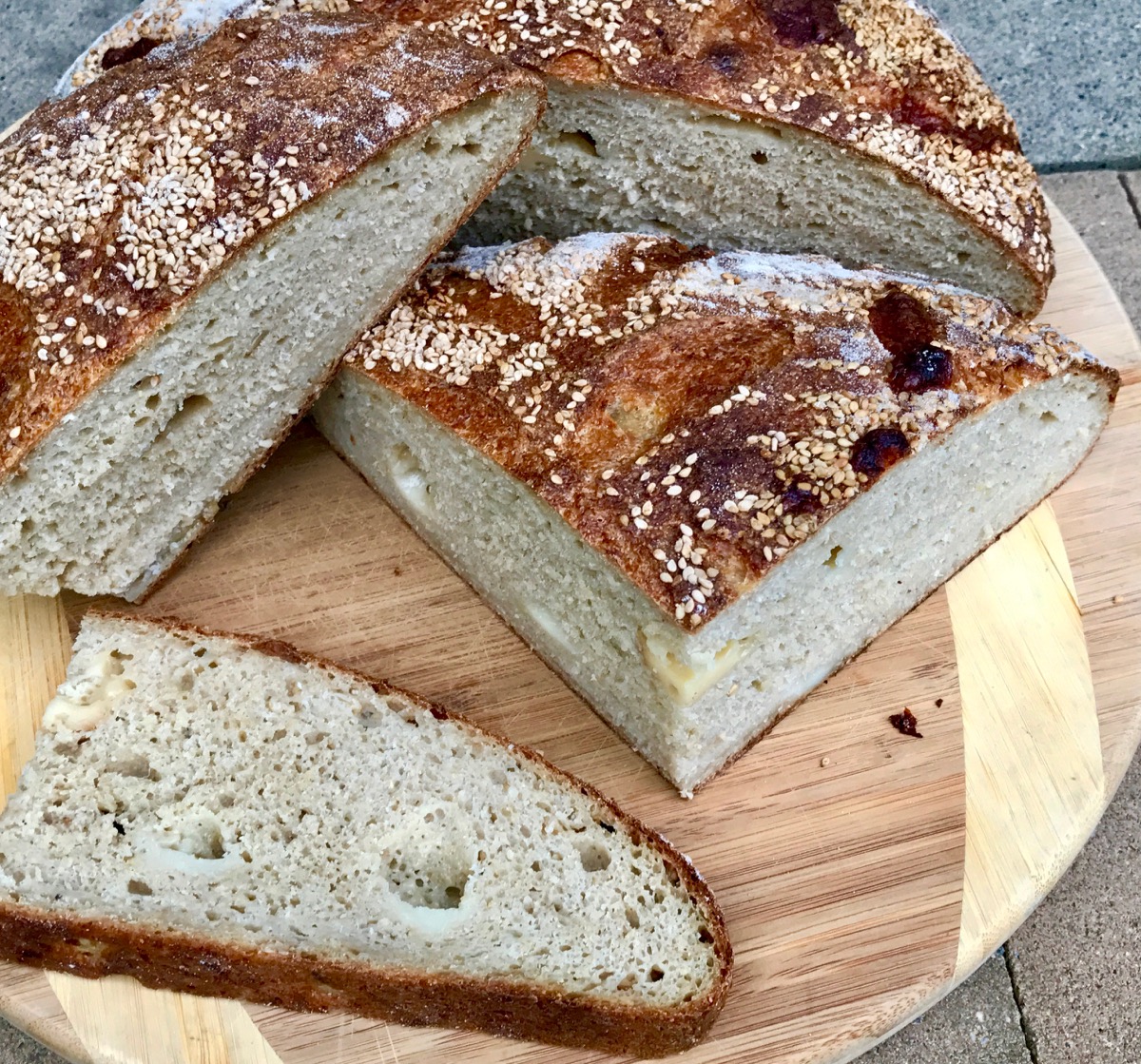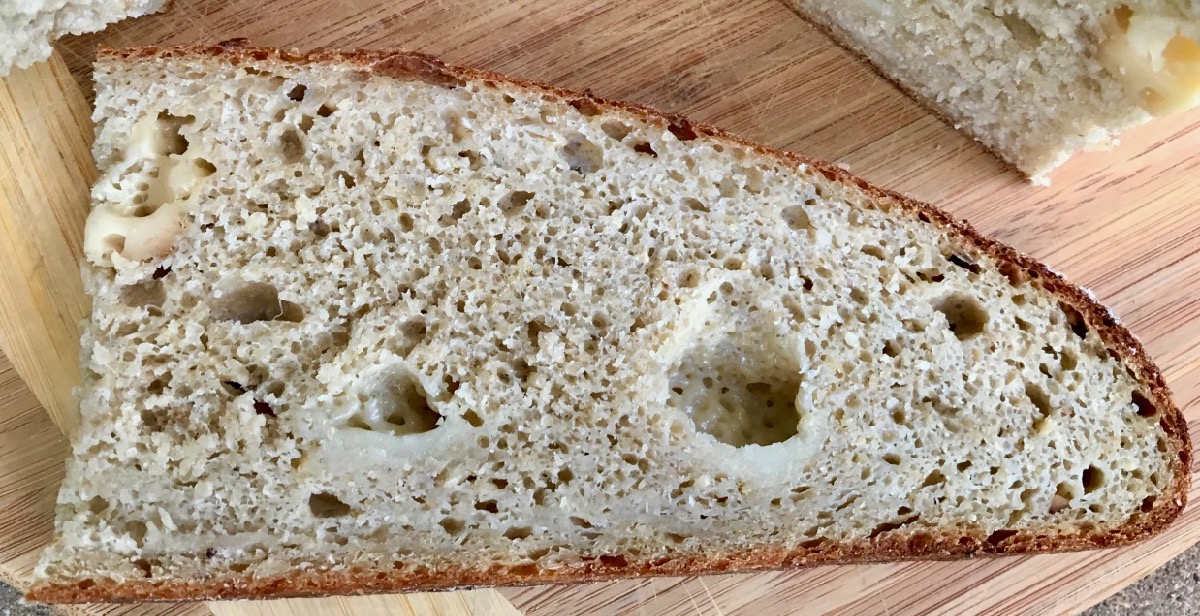Even though I have enough bread in stock to get us through the long weekend, I have been mighty restless with the enforced rest caused by my sprained foot. I knew that I didn't feel safe with juggling the high temps for loaves while on crutches, but that stunning front page display from isand66 got me wondering about making some rolls...
With that in the back of my mind, I noticed that I had some pumpkin puree hanging out in my freezer for a while, so that image joined in with the rolls idea...
I spent some time wandering through blogs here and elsewhere, and found a lot of different pumpkin roll recipes, some yeasted, some sourdough, some dinner-roll or sandwich-roll style, and many versions of cinnamon / chelsea bun / sweet roll sort of thing. There were a lot with dried fruits (a LOT with cranberries), and all of them were very sweet and included the stereotypical "pumpkin pie spice" (cinnamon, nutmeg, ginger, and sometimes a touch of cloves).
None of that really appealed to me, though. "Sweet" and "pie" just weren't what I wanted in these rolls, so I got the leaven and the poolish going, thawed the pumpkin, and then went and hung out in my pantry sniffing things until I ended up with sage, tarragon, ginger, and lots of dehydrated onion bits... I often use a mix of maple syrup and blackstrap molasses as part of the background for sweet-and-sour style sauces, so those got tossed in, too. I had just finished making a batch of lemon curd, so it made sense to me to throw the remaining lemon zest in with the rest. The flavour that I had in mind needed a good percentage of rye in there, and I wanted some durum and soft white wheat, so the base recipe started coming together.
I wasn't too sure how much stamina I would have for prepping these, so I decided on doing a hybrid with both levain and poolish, and used the refrigerator as needed. These could easily have been done in a single day, but the three days that I took worked out just fine...
INGREDIENT | AMOUNT (g) | FLOUR TOTAL (g) | % WATER | WATER (g) | BAKER'S % |
LEVAIN | | | | | |
Fresh Milled Rye | 24 | 24 | | | 3.69 |
Water | 24 | | | 24.00 | 3.69 |
Fresh Milled Durum | 100 | 100 | | | 15.38 |
Water | 80 | | | 80.00 | 12.31 |
POOLISH | | | | | |
Fresh Milled Soft White | 100 | 100 | | | 15.38 |
Water | 100 | | | 100.00 | 15.38 |
Active Dry Yeast (pinch) | 0.5 | | | | 0.08 |
DOUGH | | | | | |
Dark Rye | 176 | 176 | | | 27.08 |
Pumpkin Puree | 250 | | 90 | 225.00 | 38.46 |
Blackstrap Molasses | 20 | | 21.9 | 4.38 | 3.08 |
Maple Syrup | 20 | | 32.1 | 6.42 | 3.08 |
Dry Milk Powder | 60 | | | | 9.23 |
Lemon Zest | 5 | | | | 0.77 |
Ginger, dried ground | 4 | | | | 0.62 |
Sage, dried, ground | 4 | | | | 0.62 |
Tarragon, dried, ground | 4 | | | | 0.62 |
Onions, dehydrated | 32 | | | | 4.92 |
Salt | 10 | | | | 1.54 |
All Purpose Flour | 250 | 250 | | | 38.46 |
Active Dry Yeast (1/4 tsp) | 1 | | | | 0.15 |
Water | 64 | | | 64.00 | 9.85 |
| | | | | |
Total Dough Weight | 1328.5 | | | | 204.38 |
| | | | | |
Total Flour | | 650 | | | 100.00 |
Total Water (Hydration) | | | | 503.80 | 77.51 |
Day 1:
Poolish build: 100g soft white + 100g water + wee pinch ADY, allowed to sit at room temperature for 4 to 6 hours, then either used immediately or refrigerated.
Levain build: 40g lively starter (20g rye + 20g water) mixed with 80g whole rye flour and 80g water, allowed to sit at room temperature overnight. (This time I used up some left-over levain from previous builds: 24g rye / 24g water and 100g durum / 80g water)
Soak: Mix together pumpkin puree with dehydrated onion, maple syrup, blackstrap molasses, lemon zest, sage, ginger, and dry milk powder. Refrigerate overnight for flavours to mix.
Day 2:
Pull soak, poolish, and leaven out of fridge and allow to come up to room temperature (about 2 hours).
Dough mix: Whisk together dark rye and AP flours with 1/4 tsp ADY. Mix in poolish, leaven, and soak in to shaggy mass. Cover and let rest for 20 minutes.
Knead in the salt and keep kneading complete dough until reaches medium gluten development (just passes window pane), either using mixer or by hand. Add additional water as needed (this time was extra 63g).
Do stretch and fold mix every 20 minutes for first hour (more if needed), then leave at room temperature until dough has doubled in volume (pay attention - it could be as soon as an hour). I was too tired to finish them this time, so I popped it in to the refrigerator for overnight and it was just over doubled when I pulled it out 13 hours later.
Day 3:
Gently remove dough from bowl on to clean surface (weigh it as you remove it), then divide in to 16 even weight pieces. Cover and allow to rest for 10 to 20 minutes.
Shape each piece in to a tight ball (use lightly oiled hands and surface if the dough is really sticky or seems too dry), and place on to parchment lined baking sheet or in to a greased pyrex baking dish (for pull-apart style), leaving space for expansion. Glaze with milk, then cover with oiled plastic wrap and allow to proof until doubled in size (could be anywhere from 45 minutes to 4 hours - watch the dough!). This time the dough felt quite dry, so I used oiled hands and shaped on oiled plastic film, which was then used to cover the shaped pieces. Proof was 2-1/2 hours with my kitchen at under 70 deg F.
Preheat oven to 400 degrees F. Once rolls are fully proofed, glaze tops again with milk, then drop temp to 375 degrees F and bake for 25-30 minutes until golden brown on top and register 190 degrees F internal.
Allow to cool in pan for about 10 minutes, then finish cooling on rack.

I really wasn't sure whether I wanted slightly more "crusty" stand-alone rolls, or the softer and higher pull-aparts, so I settled on 9 in a 9" x 9" greased pyrex, with 7 done individually on a parchment lined baking sheet. Both options were easy enough for me to handle with one hand, but I really should have steamed the individual ones and started them at a higher temp.
The first "taste test" one was the "spare" 7th from the baking sheet --- and I couldn't wait for it to fully cool! The husband drifted by as I sliced it, and we are in agreement that this more savoury version of a pumpkin roll is definitely a winner for us, and just calls out for turkey sandwiches with stuffing or a spicy hoisin style chicken...
They are all cooled now, and mostly sliced and wrapped and in to the freezer (with a few out to enjoy with dinner).

All in all, it was a grand distraction, and definitely achievable without aggravating the injury. The refrigerator is definitely my friend, and it sure is handy being able to choose sourdough or ADY or a combination in an amount that gives a whole ton of leeway in the schedule.
Keep baking happy!






